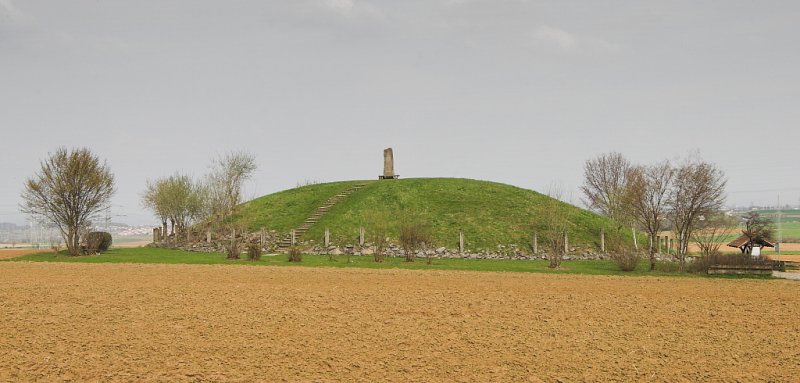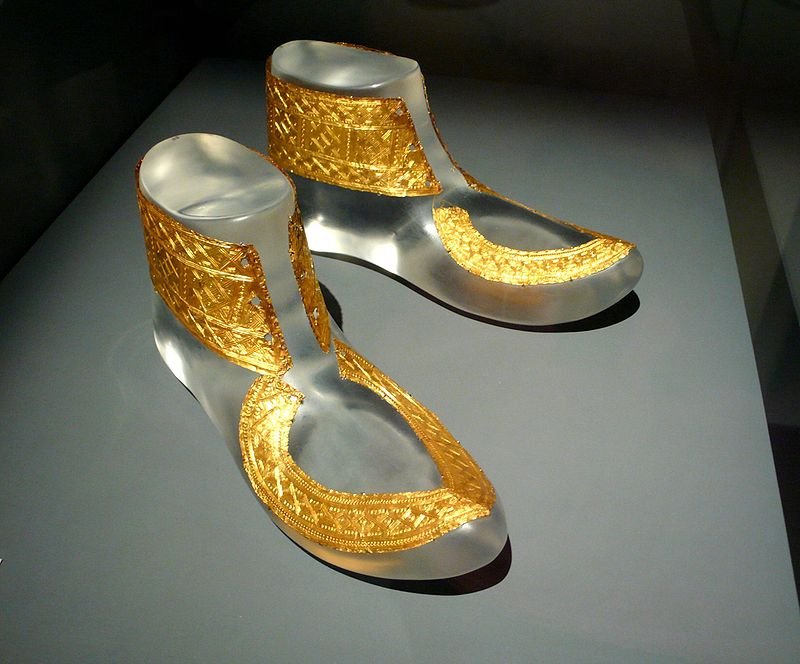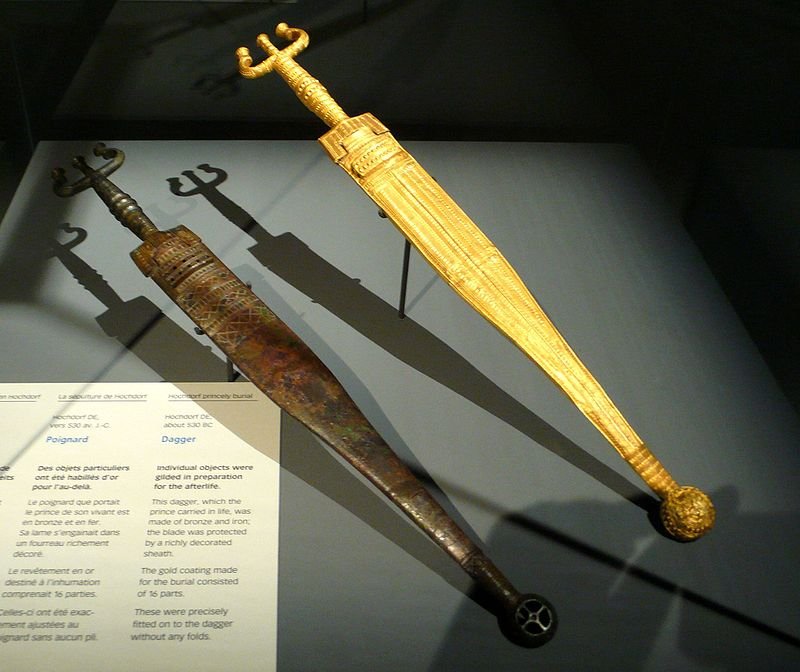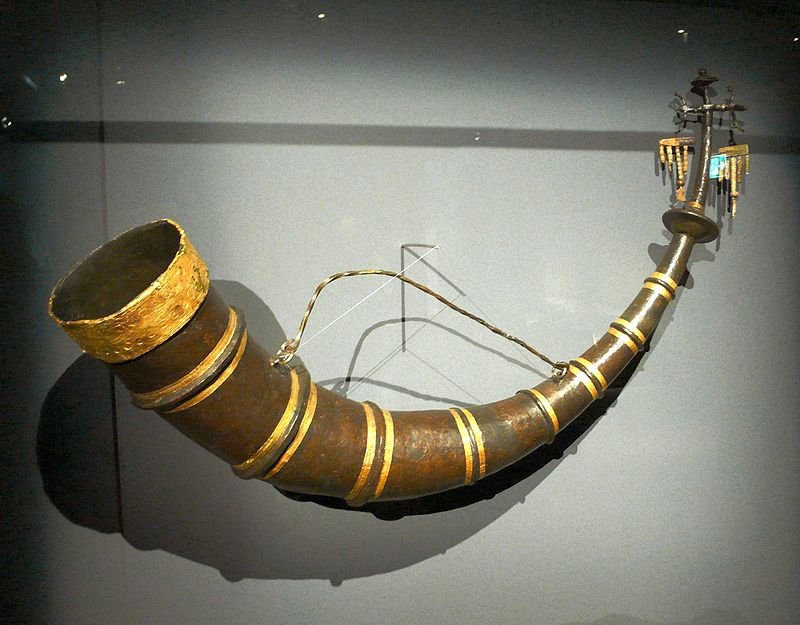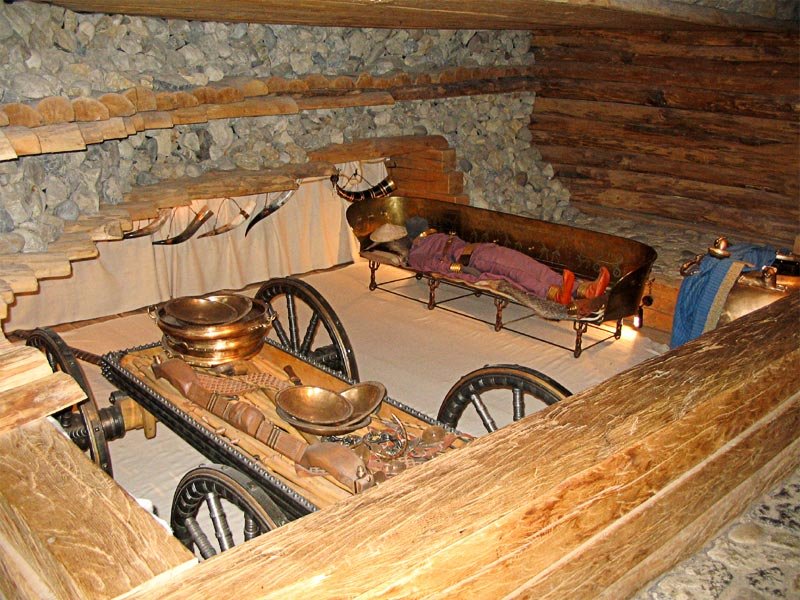Magnificent Hochdorf Chieftain’s Grave – Resting Place Of The Celtic Tutankhamun
Conny Waters - AncientPages.com - To discover a magnificent Celtic burial like the Hochdorf chieftain's grave is a dream of every archaeologist.
Celtic burial mound reconstructed. Credit: Detlef Meissner, CC BY 2.5
The Celts lived in large parts of Europe during the Bronze Age and Iron Age, and these intriguing people were skilled craftsmen whose artifacts we can admire today.
One ancient object often mentioned demonstrating the high artistic skills of the Celts is the Gundestrup Cauldron, a magnificent vessel made from richly decorated plates of silver that were assembled into a single cauldron.
However, the place of the discovery of the Gundestrup Cauldron was never inhabited by the Celts. The cultural exchange between the Thracians and Celts in Bulgaria probably inspired the motifs on the vessel.
Hochdorf Chieftain's Grave, golden shoes ornaments. Credit: Rosemania, CC BY 2.0
The Hochdorf chieftain's grave in Baden-Württemberg, Germany, offers a unique view of beautiful objects produced by the Celts.
Discovered by an amateur archaeologist in 1968, the tomb is often referred to as the resting place of the Celtic Tutankhamun.
The grave, dating from 530 BC, has been excavated and reconstructed. The 6 ft 2 in (187 cm) tall man buried in the grave was most likely a Celtic chieftain. His death was about 40 years ago, and his richly decorated tomb strengthens the theory that he must have been influential among his people.
The Celtic Chieftain was given a dagger with gold foil in preparation for the afterlife. Credit: Rosemania, CC BY 2.0
The unknown Celtic man was put to rest, wearing richly decorated garments with a gold-plated torc around his neck.
The man's golden shoes were the most astonishing of all objects in the grave.
A drinking horn was also found in the grave. Credit: Chez Cåsver, CC BY 2.0
The Celtic chieftain had a bracelet on his right arm and a hat made of birch bark. Among the burial gifts, archaeologists discovered a gold-plated dagger made of bronze and iron, beautiful amber jewelry and a razor knife, a nail clipper, a comb, fishing hooks, and arrows.
So far, archaeologists have discovered about 100 similar graves from the same period in France, Germany, and Switzerland.
Reconstruction of the Celtic Hochdorf Chieftain's Grave in the Museum. Credit: jnn95, CC BY-SA 3.0
Unlike the mysterious Bull Rock cave, where scientists uncovered an ancient mass grave that remains unexplained, the history of the Hochdorf Chieftain's grave was much easier to reconstruct.
In 1985 the Hochdorf Chieftain's Grave was successfully reconstructed, and a museum was built near the ancient burial mound.
The presence of Celtic inhabitants was confirmed when archaeologists unearthed an ancient Celtic village not far from the tomb belonging to the Celtic Tutankhamun.
Updated on January 29, 2023
Written by Conny Waters – AncientPages.com Staff Writer
Copyright © AncientPages.com All rights reserved. This material may not be published, broadcast, rewritten or redistributed in whole or part without the express written permission of AncientPages.com
More From Ancient Pages
-
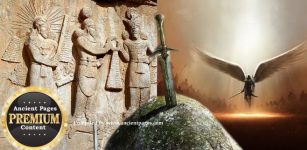 Red-Headed Alevi In Kurdistan Could Be Guardians Of Watchers’ Secret Knowledge And Shed Light On The Excalibur Legend
Civilizations | Jan 31, 2018
Red-Headed Alevi In Kurdistan Could Be Guardians Of Watchers’ Secret Knowledge And Shed Light On The Excalibur Legend
Civilizations | Jan 31, 2018 -
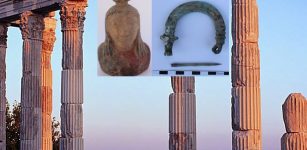 Excavations Reveal New Artifacts That Change History Of Ancient City Of Pergamon
Archaeology | Jul 4, 2020
Excavations Reveal New Artifacts That Change History Of Ancient City Of Pergamon
Archaeology | Jul 4, 2020 -
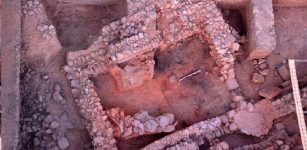 Exciting discoveries made by archaeologists in Laconia
News | Aug 25, 2015
Exciting discoveries made by archaeologists in Laconia
News | Aug 25, 2015 -
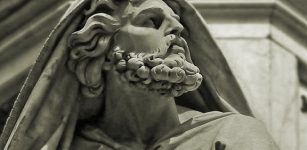 Isaiah: Prophet Who Predicted The Coming Of Jesus Christ To Salvage Mankind From Sin
Biblical Mysteries | Apr 4, 2019
Isaiah: Prophet Who Predicted The Coming Of Jesus Christ To Salvage Mankind From Sin
Biblical Mysteries | Apr 4, 2019 -
 Ancient Syriac Epitaphs Discovered In Tomb Of Priest Monoha Shed New Light On The Assyrian Empire
Archaeology | Dec 23, 2019
Ancient Syriac Epitaphs Discovered In Tomb Of Priest Monoha Shed New Light On The Assyrian Empire
Archaeology | Dec 23, 2019 -
 New Light On Foodways In The First Cities In Mesopotamia
Archaeology | Nov 21, 2022
New Light On Foodways In The First Cities In Mesopotamia
Archaeology | Nov 21, 2022 -
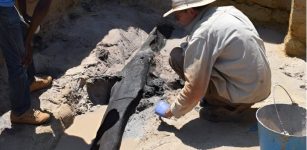 World’s Oldest Wooden Structure Discovered And It Predates Homo Sapiens – Archaeologists Say
Archaeology | Sep 20, 2023
World’s Oldest Wooden Structure Discovered And It Predates Homo Sapiens – Archaeologists Say
Archaeology | Sep 20, 2023 -
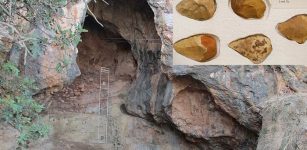 Oldest-Known Grinding Tool Used 350,000 Years Ago Was Found In Tabun Cave, Israel
Archaeology | Jan 4, 2021
Oldest-Known Grinding Tool Used 350,000 Years Ago Was Found In Tabun Cave, Israel
Archaeology | Jan 4, 2021 -
 Prehistoric Quarry, Stelida, Naxos: Early Human Moved Through Mediterranean Much Earlier
Archaeology | Oct 17, 2019
Prehistoric Quarry, Stelida, Naxos: Early Human Moved Through Mediterranean Much Earlier
Archaeology | Oct 17, 2019 -
 Mystery Of The Wizard Clip – Unexplained Half-Moon Clippings And Supernatural Phenomena West Virginia
Featured Stories | Dec 14, 2020
Mystery Of The Wizard Clip – Unexplained Half-Moon Clippings And Supernatural Phenomena West Virginia
Featured Stories | Dec 14, 2020 -
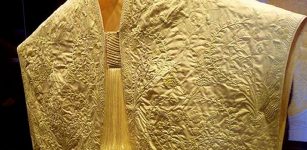 Magnificent Golden Silk Cloth Made By 1 Million Spiders Is One Of The World’s Rarest Silk Textiles
Artifacts | May 20, 2021
Magnificent Golden Silk Cloth Made By 1 Million Spiders Is One Of The World’s Rarest Silk Textiles
Artifacts | May 20, 2021 -
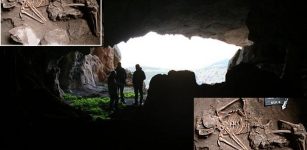 Ancient Genomes Suggest Farming In Africa Was Ignited By Oversea-Migrants From Iberia 7,400 Years Ago
Archaeology | Jun 7, 2023
Ancient Genomes Suggest Farming In Africa Was Ignited By Oversea-Migrants From Iberia 7,400 Years Ago
Archaeology | Jun 7, 2023 -
 Different Story Of Odin’s Sons Balder And Hoder In Norse Mythology
Featured Stories | Nov 26, 2020
Different Story Of Odin’s Sons Balder And Hoder In Norse Mythology
Featured Stories | Nov 26, 2020 -
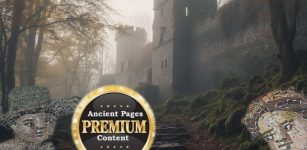 Strange Ancient And Medieval Encounters With Unusual Beings Reported And Documented
Featured Stories | Jan 15, 2024
Strange Ancient And Medieval Encounters With Unusual Beings Reported And Documented
Featured Stories | Jan 15, 2024 -
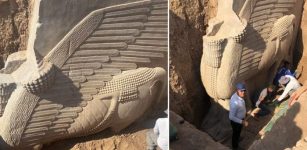 Impressive Huge Ancient Lamassu Statue Unearthed In Nineveh, Iraq
Archaeology | Oct 28, 2023
Impressive Huge Ancient Lamassu Statue Unearthed In Nineveh, Iraq
Archaeology | Oct 28, 2023 -
 Mysterious Secret ‘Square’ Discovered Beneath Avebury Stone Circle
Archaeology | Jun 30, 2017
Mysterious Secret ‘Square’ Discovered Beneath Avebury Stone Circle
Archaeology | Jun 30, 2017 -
 Triumphal Arch Of Roman Emperor Constantine And His Great Vision
Featured Stories | Jul 12, 2017
Triumphal Arch Of Roman Emperor Constantine And His Great Vision
Featured Stories | Jul 12, 2017 -
 Fisherman Pulls A Viking Sword From The River Cherwell, Oxford, UK
Archaeology | Mar 6, 2024
Fisherman Pulls A Viking Sword From The River Cherwell, Oxford, UK
Archaeology | Mar 6, 2024 -
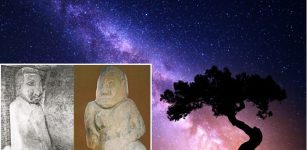 Controversial Stone Statues Of Niulang And Zhinyu And The Legend Of The Heavenly Queen And Milky Way
Artifacts | Sep 8, 2017
Controversial Stone Statues Of Niulang And Zhinyu And The Legend Of The Heavenly Queen And Milky Way
Artifacts | Sep 8, 2017 -
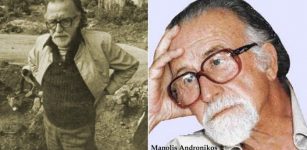 On This Day In History: Greek Archaeologist Manolis Andronikos Who Discovered Tomb of Philip II of Macedon, Was Born – On Oct 23, 1919
News | Oct 23, 2016
On This Day In History: Greek Archaeologist Manolis Andronikos Who Discovered Tomb of Philip II of Macedon, Was Born – On Oct 23, 1919
News | Oct 23, 2016

